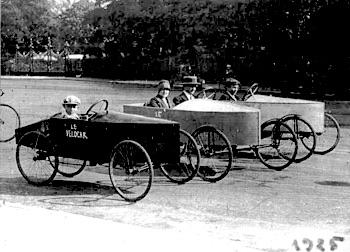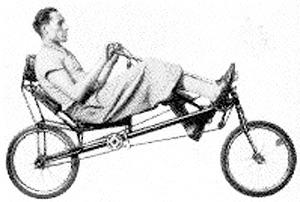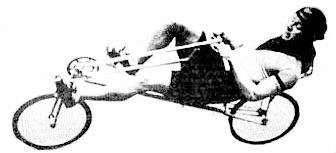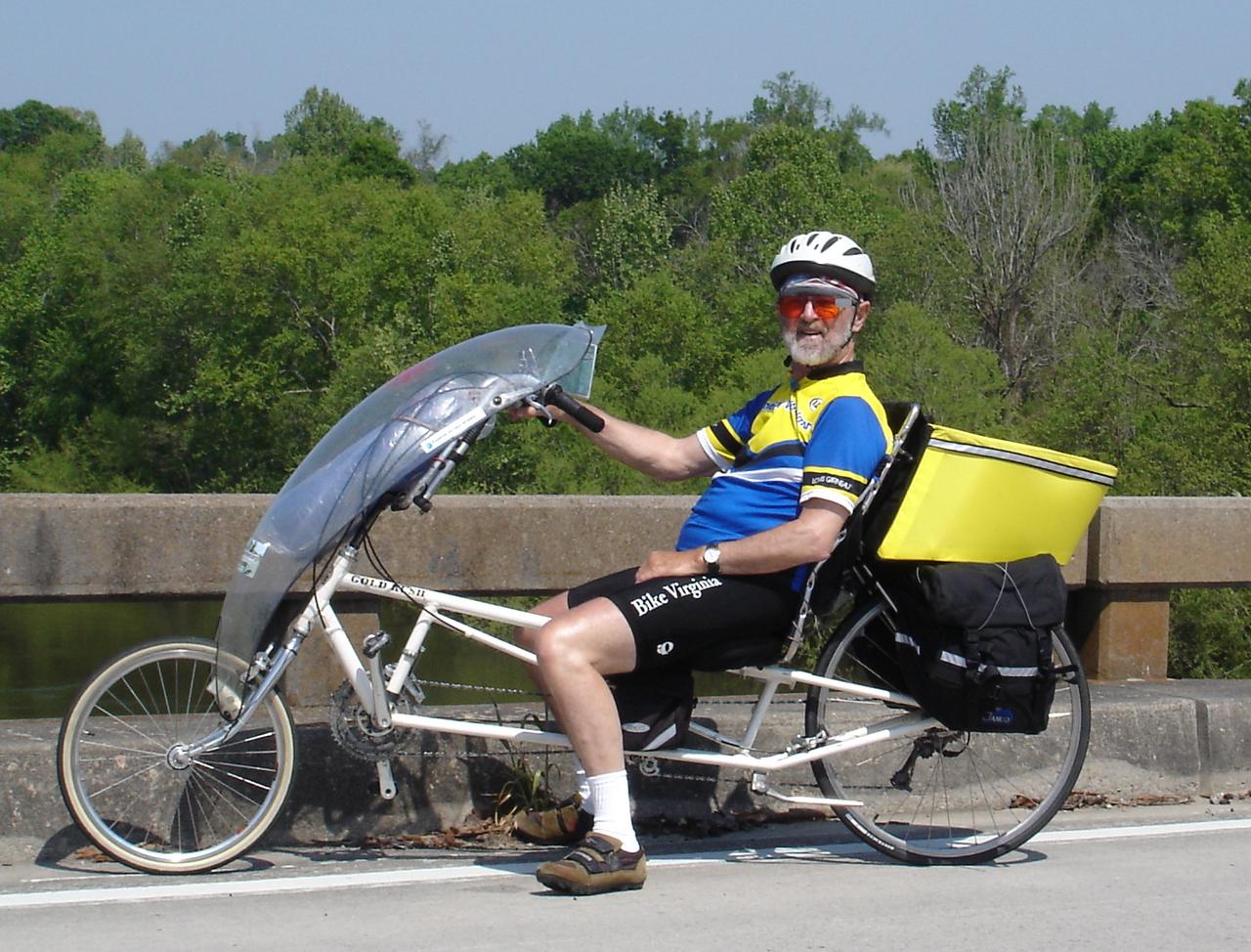The Rise of the Recumbent
Some of you may have noticed that I ride what's called a recumbent bicycle - a machine which has a big cushioned seat and a full back to rest on. Here's a little history of how this particular kind of bike, much different from the other various derivatives of the "safety" bike came to be.Before World War I, Charles Mochet built small, very light cars. That idea got its start when he built a little four-wheel pedal car for his son, because his wife was concerned with him falling off a bicycle. Much to his surprise, the little car was quite fast!
This soon led to a demand for the vehicles and Charles Mochet ultimately decided to give up the building of automobiles in favor of devoting himself to the construction of a two-seat, four-wheeled pedal-car for adults that he called "Velocar". They had the comfortable seating position and the trunk of a car, with the pedal propulsion of the bicycle. The technical equipment included a differential, three gears and a light fairing made of the airplane windshield material Triplex. After the First World War the poor economy in France aided their sale. Buying a "real" car was an unreachable dream for many Frenchmen, but Mochet's Velocar was affordable.

Velocars are still in use!! In Marseille you can rent these old HPV's and tour the city in an ecologically sound fashion.
The Velocar was popular and surprisingly fast, but at speed was difficult to corner. So Mochet decided to divide a Velocar into two halves, creating a two-wheeled version, in effect a recumbent bicycle. The bike had two 50 cm wheels, a wheel-base of 146 cm and a bottom bracket / boom that was about 12 cm above the seat and adjustable to the drivers height. It was possible to change the elevation of the seat and an intermediate drive provided the necessary gearing. Mochet not only wanted to show that the recumbent bike is faster than the common bike He also wanted to convey to other cyclists that a recumbent bicycle is also highly suitable for touring and every-day use.
Mochet's original recumbent design:

On the racing side Mochet was looking out for a good rider to ride his new recumbent bike in cycling events. Henri Lemoine, a pro cyclist was astonished at the comfort and how easy it was to steer.but, he couldn't be convinced to ride the bike in contests, probably because of the ridicule of other cyclists!
Francis Faure, brother of the famous cyclist Benoit Faure was a decidedly lesser rider than either Lemoine or his brother Benoit. After a few test rides he decided to enter a race riding it.
At the start this event the other riders laughed at him and said: "Faure, you must be tired and want to go to take a nap on that thing. Why don't you sit up upright and pedal like a man?" They quit laughing when Faure left them all behind. Faure defeated every first-class track cyclist in Europe, one after another. And Faure wasn't the only racer taking advantage of these fast machines: Paul Morand, a road racer, won the Paris-Limoges in 1933 on a recumbent bike constructed by Mochet.
The bike Faure rode to victory:

So, you may ask, why are such superior machines still rare among cyclists? Well, in my opinion it's in part because of a decision made in the early thirties by cycling officialdom banning such machines from racing! And THAT'S because speed records of all types were falling to recumbents, making it quite impossible to designate a rider as superior because of the huge difference between the types of bikes he was riding.
On April 1, 1934, the Union Cycliste Internationale (UCI), the international governing body for cycling, redefined the geometry of a "bicycle" in such a way as to ban recumbent designs from racing. Manufacturers didn't object, because cycling with conventional bicycles was very popular and they would not have to re-tool and offer a wider variety of machines. It's easy to imagine a world in which that decision went another way - perhaps we'd see millions of recumbents on the road today!
I have to speculate if there may be a second cause for recumbents' rarity, one unconsciously rooted in our biology. It's true that even today, most cyclists are dismissive of recumbents - "they don't do well on hills; I might have to ride one if I get injured and can't ride a real bicycle", etc. My speculation is that recumbent riders give the subliminal perception of submission between fighting males (as a wolf might end a fight by rolling over on his back) and therefore not "manly".
Now there's more to this story - e.g., these same innovators were experimenting with putting all kinds of fairings on these bikes, making them even faster. But that's for another post, in which we'll discuss all kinds of records and exploits.
But for now, you just can't beat a recumbent for touring. Faster, safer, and much more comfortable. And often with partial fairings, like my bike. And I don't care how I look! Here I am on a tour with another recumbent rider in 2005 from Jacksonville, FL to WInchester, VA loaded with camping equipment:

So, what do YOU think? Do you think recumbents are 'undersold' or 'underpromoted' by the cycling industry? Why do you think there aren't more of them on the roads today? Would you have ridden one when you were still an active cyclist??
--Jim Kellett